The codes and ciphers of the RAF terrorists (1)
A few days ago, a depot of the terrorist organization RAF from the eighties was discovered. On this occasion, I would like to take a look at the encryption methods of this group – as far as anything is known about them.
The active years of the terrorist organization RAF (Red Army Faction) are thankfully long gone, but the left-wing extremist group is still good for headlines today. Apparently, there are three former RAF members who earn their living with robberies. A few days ago, a depot was also found in a forest in Lower Saxony, which the terrorists created in the 1980s.
The depot is also said to have contained written documents. Unfortunately, the police have not yet published any details. But it could well be that encrypted information is also there. For this reason, I would like to talk today about the encryption methods that I know the RAF used.
RAF code names
From what I know so far, the RAF did not develop sophisticated crypto techniques that would have been used on a larger scale. In this respect, the IRA or the Mafia, for example, reached a higher level.
Instead of full-fledged encryption, the RAF often worked with aliases and code terms (somewhat more detailed information is available here and here). For example, Andreas Baader was called “Hans,” Gudrun Ensslin “Grete,” Ulrike Meinhof “Anna,” and Christian Klar “Ede.” “Pappen basteln” stood for “forging documents,” and “Topf” meant a limpet mine to be attached to a car.
Although such codes seem rather shirt-sleeved from a cryptologist’s point of view, by and large they served their purpose. The police had trouble correctly assigning the various aliases. Many aliases of the third RAF generation are still a mystery.
Had the police seen through the RAF codes earlier, they probably could have prevented some terrorist actions. In any case, RAF documents in which these codes were used were available to the police. Investigators were able to seize a whole stack of them on November 30, 1976, when they arrested two high-ranking RAF members: Siegfried Haag and Roland Mayer. To my knowledge, the documents found on this occasion have never been published – although they would be quite interesting for the history of cryptography.
It is known that the seized documents mentioned, among other things, an “Aktion Margarine”. Today we know: “Margarine” referred to Attorney General Siegfried Buback, whose initials matched the margarine brand SB. The attempt on Buback’s life was later carried out in the same way as the “Big Raushole” actions announced in the documents – meaning the Schleyer kidnapping and the airplane hijacking, which were intended to free imprisoned RAF terrorists. If the police had understood the code names and the code terms, they could have preempted the terrorists and prevented some things.
A Polybius-Vigenère variant of the RAF
Blog reader Jörg Drobick drew my attention to an encryption method used by the RAF. On the (no longer existing web page) www.wer-will-die-wende.com this was described on a photocopy. This procedure corresponded to the widely known Polybius cipher with subsequent Vigenère encryption. It provided that first a square table (Polybius square) was formed (i=j):
/ 1 2 3 4 5 1 a b c d e 2 f g h i k 3 l m n o p 4 q r s t u 5 v w x y z
The word ATTENTION thus became 11 13 23 44 45 33 22.
With the keyword PARIS (3511422443) it became:
11132344453322 35114224433511 —————————————— 46246568886833
Unfortunately, I could not find said photocopy anywhere online. Maybe a reader knows more.
A book cipher of the RAF
Blog reader John Lamping has kindly pointed out to me that there is a book cipher in the feature film “The Baader-Meinhof Complex” that the terrorists are said to have used. John has kindly provided me with screenshots from the film showing this book cipher.
The book used is Moby Dick. This is mentioned in the above Spiegel Online article, but not in connection with a book cipher, but as a source for aliases of RAF members (Baader was “Ahab”, Holger Meins “Starbuck”, Ensslin “Smutje”).
An RAF encryption method
The German news magazine Der Spiegel published an article last year about encrypted RAF messages (thanks to Ralf Bülow for the tip). According to the article, some RAF secret texts were found in a conspiratorial apartment in Heidelberg in 1980. Two years later, similar messages were found in a depot in Heusenstamm. When the terrorists Adelheid Schulz and Brigitte Mohnhaupt were arrested there, they were about to deposit two more encrypted messages there.
According to Spiegel, a decryption expert named Peter Fleischmann from the Federal Criminal Police Office (Department TE 13) solved these cryptograms. Unfortunately, only one of them is described in the article. This note, written by Schulz and describing the location of a hidden weapons and money depot, reads as follows:
Man steigt in den selben Bus wie zum Rotkehlchen, steigt eine H nach Do/2/1, 2/6, Mir1/4, To2/4, Ul 2/1, 2/3, Ru2/4, 2/1, 2/2, Ol1/1 Do2/3, 2/6, Ol1/2, 1/3, Mir2/1 – anlage aus.
The “robin” is another depot whose position is assumed to be known. “H” stands for bus stop. Obviously, the coded part of this text stands for a bus stop whose name starts with 15 letters and ends with “-anlage”.
Peter Fleischmann did not know where the robin depot was located, but he had an idea of the area in which to look. He studied maps and bus schedules to find a bus stop that had the word “plant” preceded by a 15-letter word. He finally found a place called “garbage incinerator” that seemed to fit. MÜLLVERBRENNUNGS does have 16 letters, but that could be due to a mistake.
Unfortunately, the Spiegel article does not explain in detail the cipher Schulz used. As it seems, the letters at the beginning of a cipher group (e.g. “Do”, “Mir”, “Ul”) are code names of RAF members, where “Mir” stands for Schulz himself. The following number (1 or 2) stands for that person’s first or last name, while the last number indicates the position of a letter in that name.
For example, “Mir1/4” stands for L because that is the fourth letter in Schulz’s first name, while “Mir2/1” stands for S, the first letter in Schulz’s last name. No other examples are given in the article. Blog reader M.S. suggested the following other names that would more or less fit:
- Ul: Inge Viett
- Ru: Henning Beer (his brother Wolfgang Beer would also be possible, but he was not active in the RAF at the time in question.)
- Do: Brigitte Mohnhaupt (if the surname is written “Monhaupt)
- Ol: Angelika Speitel (if Ol1/1 is an error)
According to Spiegel, cracking this message led to more RAF ciphertexts being solved. I hope that these will be published one day.
Further RAF ciphers
Blog reader Steffen (DG0MG) drew my attention to the fact that the ZDF documentary “The Hunt for the RAF” contains further information on the subject. I will go into these in the second part of this article.
According to a reader comment, there should be more information on the website telavivpress.org (meanwhile taken over by The Jerusalem Post), but I could not find it so far. Perhaps a reader knows more.
Anyone who knows more on the subject, please get in touch.
If you want to add a comment, you need to add it to the German version here.
Follow @KlausSchmeh
Further reading: Gesucht: Sechs verschlüsselte Verbrecher-Nachrichten
Linkedin: https://www.linkedin.com/groups/13501820
Facebook: https://www.facebook.com/groups/763282653806483/

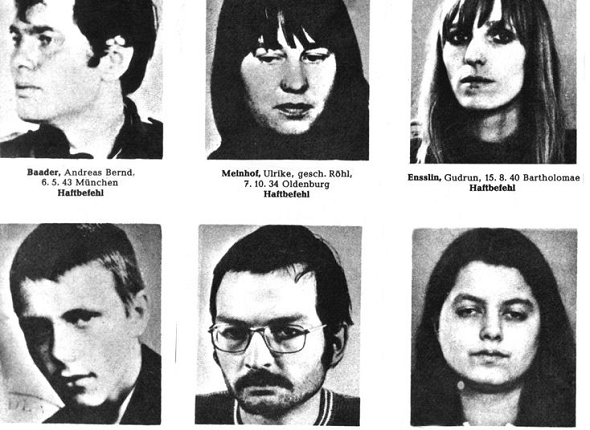
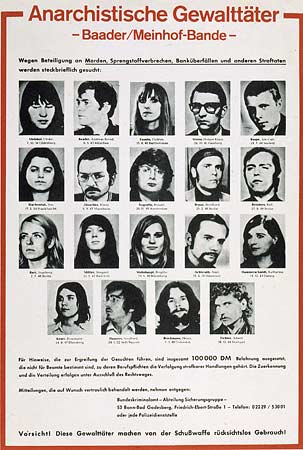
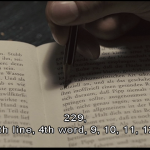
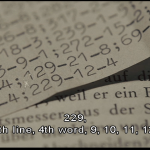
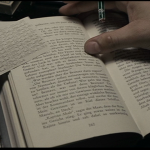

Letzte Kommentare